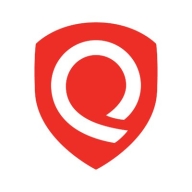

Qualys Web Application Scanning (WAS) and OWASP Zap are both competitors in the web application security domain. Qualys WAS holds the upper hand due to its comprehensive integration capabilities and lower false positives.
Features: Qualys WAS integrates with Selenium IDE, offers zero-day vulnerability protection, and focuses on low false positives with features like OWASP Top 10 and PCI-ASV scanning. It supports tool integration and CI/CD pipeline automation. OWASP Zap, being open source, includes an intercepting proxy, fuzzer, AJAX crawling, and customizable extensions. Its flexibility and community support stand out despite fewer out-of-the-box features.
Room for Improvement: Qualys WAS could refine its pricing model, enhance user experience, and further reduce false positives. It struggles with comprehensive vulnerability discovery. OWASP Zap lacks robust automated reporting and wide vulnerability detection compared to commercial tools. Users seek better documentation and improved authentication and business logic testing.
Ease of Deployment and Customer Service: Qualys WAS offers flexible cloud solutions with hybrid, private, and public cloud deployment and responsive technical support, though experiences vary. OWASP Zap is mainly adopted for on-premises use with reliance on community resources for support, which can be a limitation.
Pricing and ROI: Qualys WAS, seen as expensive with licensing based on asset counts and additional costs, provides value through streamlined processes and reduced failure rates. In contrast, OWASP Zap's appeal lies in its free open-source model, offering cost-effective security despite indirect deployment costs.
| Product | Market Share (%) |
|---|---|
| OWASP Zap | 4.3% |
| Qualys Web Application Scanning | 2.1% |
| Other | 93.6% |


| Company Size | Count |
|---|---|
| Small Business | 10 |
| Midsize Enterprise | 11 |
| Large Enterprise | 21 |
| Company Size | Count |
|---|---|
| Small Business | 8 |
| Midsize Enterprise | 6 |
| Large Enterprise | 27 |
OWASP Zap is a free and open-source web application security scanner.
The solution helps developers identify vulnerabilities in their web applications by actively scanning for common security issues.
With its user-friendly interface and powerful features, Zap is a popular choice among developers for ensuring the security of their web applications.
Qualys Web Application Scanning (WAS) is a fully cloud-based web application security scanner. The scanner will automatically crawl periodically and test web applications to discover potential vulnerabilities, including cross-site scripting (XSS) and SQL injection. The consistent testing equips the automated service to generate consistent results, lessen false positives, and offer the ability to scale to protect thousands of websites effortlessly.
Qualys Web Application Scanning is bundled with different scanning technology to carefully scan websites for malware infections and will send notifications to website owners to assist in preventing blacklisting and brand reputation damage. As digital transformation takes place in various organizations, Qualys WAS gives organizations the ability to track and document their web app security status through its interactive reporting capabilities.
Qualys WAS empowers organizations to remediate any web application vulnerabilities quickly. Some of the key tools offered are:
Benefits of Qualys Web Application Scanning
Qualys Web Application Scanning offers many benefits, including:
Reviews from Real Users
Qualys Web Application Scanning stands out among its competitors for a variety of reasons. Two of those reasons are its progressive scan and quick detection of vulnerabilities.
P.K., a senior software developer at a tech vendor, writes, "The feature that I have found most valuable is the progressive scan. It is good. It's done in 24 hours."
Nagaraj S., lead cybersecurity engineer at a tech service company, notes, "I have found the detection of vulnerabilities tool thorough with good results and the graphical display output to be wonderful and full of colors. It allows many types of outputs, such as bar and chart previews."
We monitor all Static Application Security Testing (SAST) reviews to prevent fraudulent reviews and keep review quality high. We do not post reviews by company employees or direct competitors. We validate each review for authenticity via cross-reference with LinkedIn, and personal follow-up with the reviewer when necessary.